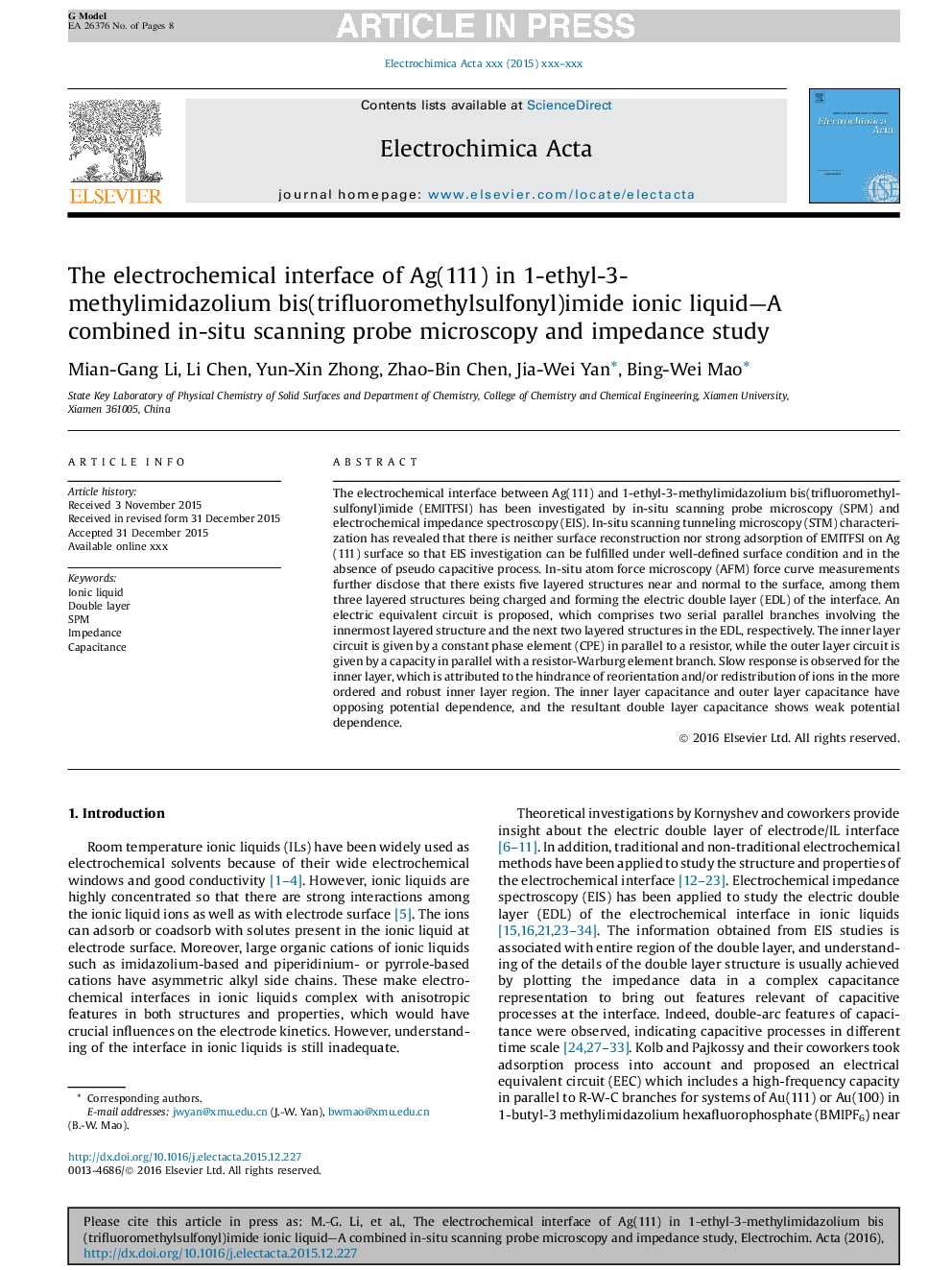| Article ID | Journal | Published Year | Pages | File Type |
|---|---|---|---|---|
| 6608087 | Electrochimica Acta | 2016 | 8 Pages |
Abstract
The electrochemical interface between Ag(111) and 1-ethyl-3-methylimidazolium bis(trifluoromethylsulfonyl)imide (EMITFSI) has been investigated by in-situ scanning probe microscopy (SPM) and electrochemical impedance spectroscopy (EIS). In-situ scanning tunneling microscopy (STM) characterization has revealed that there is neither surface reconstruction nor strong adsorption of EMITFSI on Ag(111) surface so that EIS investigation can be fulfilled under well-defined surface condition and in the absence of pseudo capacitive process. In-situ atom force microscopy (AFM) force curve measurements further disclose that there exists five layered structures near and normal to the surface, among them three layered structures being charged and forming the electric double layer (EDL) of the interface. An electric equivalent circuit is proposed, which comprises two serial parallel branches involving the innermost layered structure and the next two layered structures in the EDL, respectively. The inner layer circuit is given by a constant phase element (CPE) in parallel to a resistor, while the outer layer circuit is given by a capacity in parallel with a resistor-Warburg element branch. Slow response is observed for the inner layer, which is attributed to the hindrance of reorientation and/or redistribution of ions in the more ordered and robust inner layer region. The inner layer capacitance and outer layer capacitance have opposing potential dependence, and the resultant double layer capacitance shows weak potential dependence.
Related Topics
Physical Sciences and Engineering
Chemical Engineering
Chemical Engineering (General)
Authors
Mian-Gang Li, Li Chen, Yun-Xin Zhong, Zhao-Bin Chen, Jia-Wei Yan, Bing-Wei Mao,
